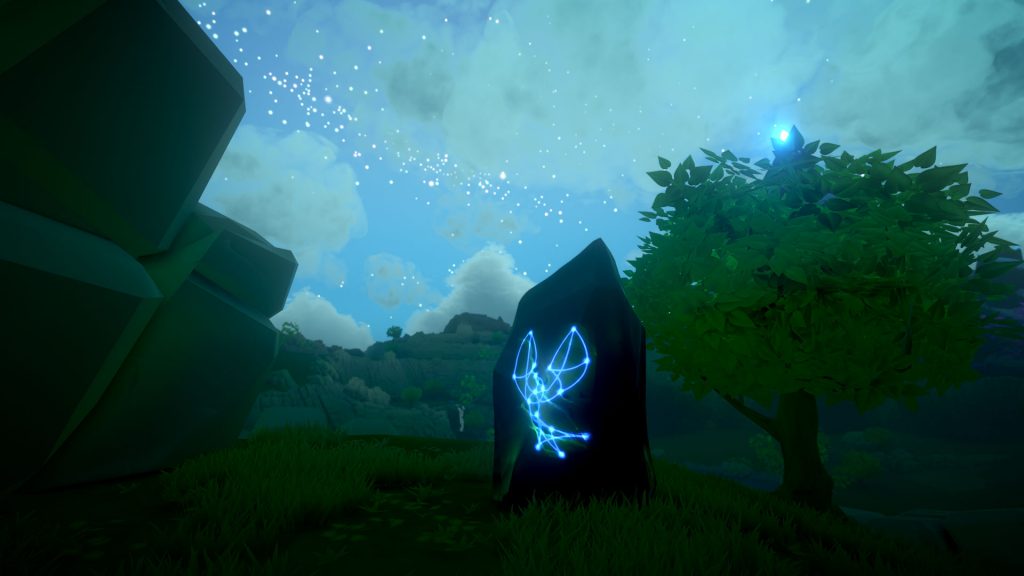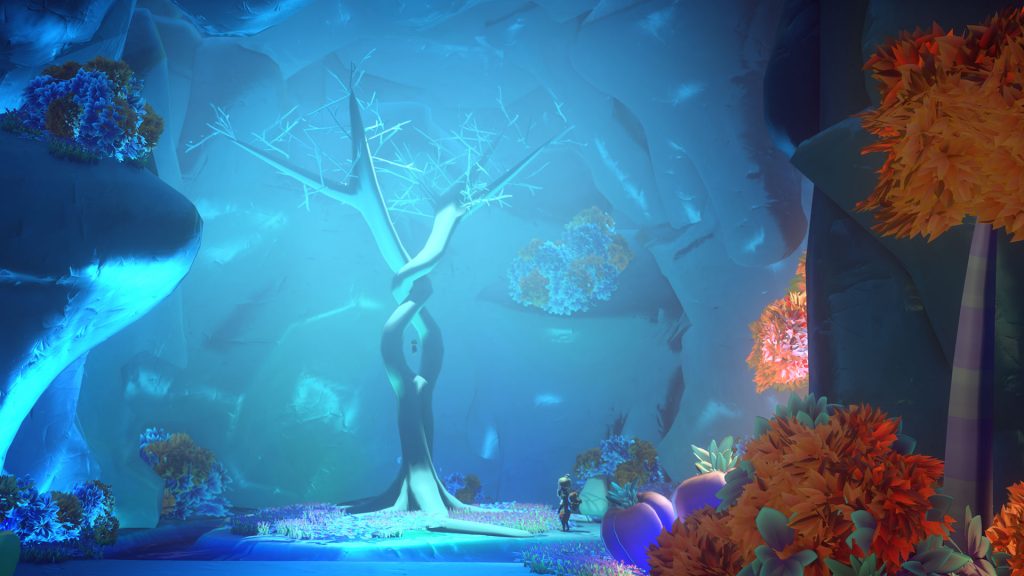
Quick, how many people does it take to develop a game that combines Zelda, Harvest Moon, and a bit of Stardew Valley for good measure? Well, if Yonder: The Cloud Catcher Chronicles, the first game from Australian studio Prideful Sloth, is any indication, the answer is three. Yeah, you can develop a game this big, that looks this good, with three people. What a world we live in.
Yonder starts off simply: after customizing your character, you’re dropped onto a boat on the way to the island of Gemea, with only a letter from your parents, and the magical Celestial Compass, to guide you. See, your parents sent your character away at a young age to protect you from the darkness that had consumed the island, but hoped one day, with the help of the compass, you would return home to set things right. As you approach the island, your ship is struck by lightning, and sinks to the bottom of the sea.
You’re pulled from the deep by Aerie, the mystical mother of the Sprites, benevolent spirits that live on the island in harmony with people. Or used to, anyway. Aerie tells you that the Cloud Catcher, the device that has historically protected Gemea, is broken. As a result, a dark substance known as Murk has poisoned the island. As the last of the Sprite-seers, Aerie charges you with recovering the Sprites around the island, fixing the Cloud Catcher, and discovering your past, and the history of the island, in the process.
"Yonder features no combat, or violence, of any kind. Instead of fighting monsters or exploring dungeons, you’ll spend your time exploring, farming, finding Sprites, and trading with the local populace."
While the visual callbacks to Zelda (the art style, the unspoken dialogue punctuated by small sounds to add flavor) are obvious, and the game revolves around a chosen hero who is saddled with saving a chosen area, there is one key difference: Yonder features no combat, or violence, of any kind. This is where your Stardew Valley/Harvest Moon comparison comes in. Instead of fighting monsters or exploring dungeons, you’ll spend your time exploring, farming, finding Sprites, and trading with the local populace.
The island of Gemea is divided into eight different sections, or biomes. Each one features different plants, animals, and towns, and many are home to one of the game’s six guilds: the Carpenters, the Chefs, the Constructors, the Tinkers, the Brewers, and the Tailors. You can join each one, which will give you access to different crafting recipes. The Carpenters, for instance, will allow you to build animal pens and planters for your farms, while the Tinkers will allow you to build machines that can produce cloth, seeds, cheese, fertilizer, and other items.
Joining a guild is easy: you’re tasked with completing a couple of introductory recipes, and then given access to the first tier of items. More items are unlocked after you’ve constructed enough items of value in each guild. Crafting is essential if you want to complete quests in the world and build your farm. More importantly, it will give you items to trade.
"When you’re not out trading, you’ll be exploring, clearing the Murk, and farming. Gemea is a beautiful land, complete with day/night cycles and seasons, and each biome offers different flora and fauna for you to collect depending on what time of day or year it is."
Yonder doesn’t have a currency system; while you can acquire most items, like wood, stone, ore, fodder, etc by chopping down trees, breaking rocks, mining, and cutting grass in the world, the only way to acquire some items is by trading. The system is rudimentary: each item is assigned a value that may be marked up or down depending on where you’re trading it. For instance, you’ll probably be able to get nails on the cheap from the town that houses the Carpenter’s Guild, but you won’t get much value for your wood.
Unfortunately, the trading system is a bit bare bones, at least in terms of individual trades. NPCs will only trade with you if the value you offer is equal to or greater than the value of what they’re trading you, so there’s very little way to game the system. It ultimately feels like a puzzle to solve. Which items do you trade, and to whom? Where’s the best place to manipulate the market for a certain item? It’s up to you to find out, and if you want to deep dive into Yonder’s markets, the option is available to you.
When you’re not out trading, you’ll be exploring, clearing the Murk, and farming. Gemea is a beautiful land, complete with day/night cycles and seasons, and each biome offers different flora and fauna for you to collect depending on what time of day or year it is. Traversing the map is a relaxing experience, and no matter where you are, it always feels like there’s something new for you to discover. Your core objective during exploration is to find Sprites. The more you have, the bigger the Murk you can clear, which offers access to items resources, and even new areas of the map. Sprites themselves can be found in the environment or by doing quests, so the more you explore, the more you’ll find. There is a fast travel system for quick quest completion, but I found myself making little use of it in a game world this beautiful.
" The most important part of the game is farming. You’ll have to attract animals to your farm with food or plant seeds, and maintain it. That means collecting the items that your farm is producing, and making sure that it is clean."
The most important part of the game is farming. You’ll have to attract animals to your farm with food or plant seeds, and maintain it. That means collecting the items that your farm is producing, and making sure that it is clean. Of course, if you simply want your farm to maintain itself, you can always hire a farmhand by bribing someone with food. You don’t have to dive too deep into farming if you don’t want to. I completed the game without using my farms all that much, but they do provide the backbone of the game, and the element that has received the most attention.
Yonder isn’t a long game. The main quest can be completed in as little as 6-8 hours with minimal investment in crafting or farming. The real joy of the game, however, isn’t in the main quest. It’s in exploring Gemea, taking in the beautiful scenery, listening to the soundtrack, crafting, building, and farming, and how much you get out of the game will largely depend on how you choose to engage in its game world.
Yonder: The Cloud Catcher Chronicles is a unique game. Its focus on exploration, crafting, and farming, and decision to eschew combat, is a relaxing change of pace in an industry often focused on violence. How much you get from a game like this is up to you: its lack of direction will inevitably bore some people, but it will captivate others. If you open your mind, the world of Gemea has many beautiful things to show you. All you need to bring is your compass.
This game was reviewed on the PlayStation 4.
Excellent visual design. A focus on exploration, crafting, and farming. Relaxing soundtrack. Intriguing game world.
Short main quest. Trading system is a bit simplistic. Little replay value. Lack of direction will bother some players.



















